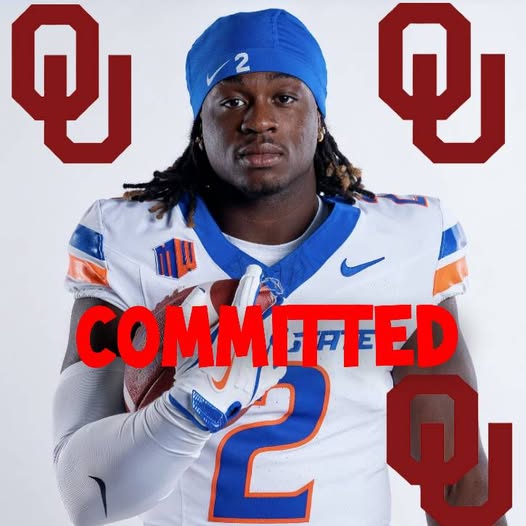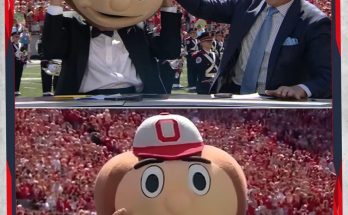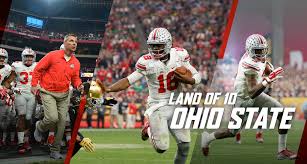In a significant recruiting victory that has sent ripples through the college basketball landscape, the No. 1 national player in America has officially committed to the University of Oklahoma, choosing the Sooners over a formidable list of powerhouses that included South Carolina, Louisville, LSU, and UConn. The decision, announced weeks ahead of schedule, has not only changed the trajectory of Oklahoma’s women’s basketball program but also reshaped the hierarchy of recruiting momentum heading into next season. This commitment is not just a coup for Oklahoma—it’s a seismic cultural shift in how top-tier talent evaluates their futures in the modern NIL-driven era of collegiate athletics.
The identity of the No. 1 player in the nation carries immense weight in any given recruiting cycle. These are not just high school athletes—they are future lottery picks, NIL juggernauts, cultural icons, and often, transformational program builders. This particular prospect had been courted by every major program in the country. South Carolina, under Dawn Staley, has become a dynasty; Louisville remains a perennial contender with strong recruiting roots; LSU, fresh off a national title and led by Kim Mulkey’s charismatic coaching, was believed to be a front-runner; and UConn, with its legacy and track record for producing WNBA superstars, was in the hunt until the end. Yet in the midst of this heated race, it was Oklahoma—previously thought to be on the periphery of elite recruiting conversations—that sealed the deal.
Why Oklahoma? That question has been asked across social media platforms, inside recruiting circles, and on sports radio shows from coast to coast. The answer lies in a combination of strategic planning, genuine relationship-building, and the evolution of the program under its current leadership. Oklahoma head coach Jennie Baranczyk has been steadily building a culture rooted in family, player development, and empowerment. When she took over the program, many believed the Sooners were in for a long rebuild. But she quickly turned around the team’s fortunes, returning Oklahoma to NCAA Tournament relevance and injecting new energy into the fanbase.
For the No. 1 recruit to choose Oklahoma over the blue-bloods speaks volumes about Baranczyk’s ability to connect with her players beyond just basketball. Reports indicate that during campus visits, the recruit and her family were struck by the program’s family atmosphere. Rather than pitching NIL deals or relying on the prestige of a national brand, Oklahoma emphasized personal development, mental health support, academic balance, and the opportunity to be a cornerstone of something unique and homegrown. This holistic approach appears to have resonated deeply with the player and her family.
The athlete herself is nothing short of a phenom. Standing at 6-foot-2 with a guard’s skillset, a forward’s versatility, and a competitor’s mentality, she’s been dominating high school and travel circuits since she was a freshman. With a polished offensive game, elite court vision, and the ability to guard multiple positions, she’s drawn comparisons to players like Breanna Stewart and A’ja Wilson. Her presence alone shifts the balance of power, and Oklahoma fans are already salivating at the idea of seeing her don the crimson and cream.
The early nature of the commitment also matters. Recruits of her caliber often wait until the late signing period to announce, using the extra time to weigh options and see how rosters shake out. For this decision to come now suggests a level of clarity and conviction rarely seen in elite recruiting battles. It’s a signal to other top players across the country: Oklahoma is not just a viable option—it’s a destination. This early commitment gives the Sooners a massive boost in recruiting leverage. Already, whispers have begun about other high-profile prospects scheduling visits to Norman in the fall, eager to see what the buzz is about and potentially team up with the No. 1 recruit to form a super-class.
Of course, this decision isn’t just a basketball story. It’s a window into the changing landscape of college athletics, particularly for women. In years past, a top recruit would almost never have chosen a school outside the top five in national championships or TV exposure. But in the NIL era, where individual brand, playing time, and leadership opportunities matter just as much—if not more—than legacy, Oklahoma offered a package that was hard to beat. Sources close to the situation confirmed that while NIL was discussed, it was not the driving factor. Still, Oklahoma has quietly built an effective NIL infrastructure that supports athletes in building their personal brands without compromising their college experience.
The national response has been immediate and intense. South Carolina fans are stunned, with many believing they had a firm grip on the recruitment until the final days. Louisville supporters are asking what more could’ve been done, while LSU, with its championship pedigree and vibrant culture, is left reeling from a rare loss on the recruiting trail. UConn, ever the bridesmaid in recent high-stakes recruiting races, must once again look elsewhere to find its next generational player. Meanwhile, Oklahoma supporters have flooded social media with messages of celebration, anticipation, and pride.
Beyond the headlines and the rankings, this commitment is a personal triumph for a young woman who had the world at her fingertips and chose her next home not based on glitz or pressure, but on comfort, vision, and belief. In her own words during the announcement, she said, “It just felt right. I want to build something where I’m not just another piece—I’m the foundation.” That statement alone encapsulates what Oklahoma offered and what the other programs, despite their glittering resumes, perhaps could not.
For Oklahoma’s coaching staff, the work is far from over. With expectations now sky-high, the challenge will be translating this recruiting victory into on-court success. History has shown that even the best individual players need support and structure to win at the highest level. The program will now be under a microscope, with national media and opponents alike watching to see if the Sooners can make the leap from promising upstart to true national contender.
But for now, this is a moment of triumph, validation, and hope. It’s a signal that with the right leadership, vision, and authenticity, programs can rise above the traditional pecking order and land the type of generational talent that rewrites history. This commitment is not just about basketball—it’s about empowerment, self-awareness, and redefining what success looks like in women’s college sports.
The ripple effects will be felt immediately. Expect other elite recruits to reevaluate their options, realizing that the “safe” choices aren’t always the best ones. Expect Oklahoma’s games to be nationally televised more frequently. Expect ticket sales to spike, alumni donations to increase, and a new era of interest in Sooners women’s basketball to begin.
Most of all, expect the sport itself to benefit. When top-tier talent spreads out rather than consolidates, the level of competition rises, and the narrative becomes richer. The parity that’s begun to take hold in women’s college basketball just received a powerful boost. The idea that only a handful of programs can realistically win national titles is being challenged—and that’s a good thing for the game.
In many ways, this commitment marks the start of a new chapter. For Oklahoma, it’s the dawn of a potential dynasty. For the athlete, it’s the beginning of a journey where she gets to be more than a star—she gets to be a pioneer. And for women’s college basketball, it’s yet another sign that the future is bright, competitive, and beautifully unpredictable.



